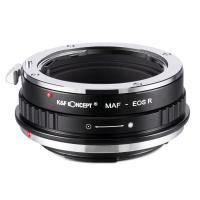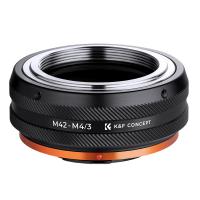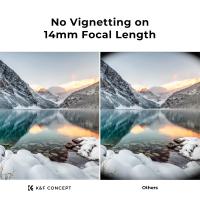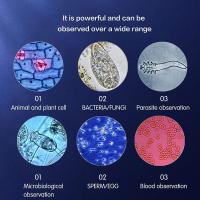What Does Thrush Look Like Under A Microscope?
Under a microscope, thrush appears as a collection of yeast cells that are oval-shaped and can form long chains. These cells are typically small, measuring between 3 and 5 micrometers in diameter. They may also have a characteristic budding pattern, where smaller daughter cells grow off the larger parent cells. In addition to yeast cells, thrush may also contain hyphae, which are long, branching filaments that can penetrate and damage tissues. These structures are typically seen in more severe cases of thrush. Overall, the appearance of thrush under a microscope can vary depending on the severity of the infection and the type of sample being examined.
1、 Fungal morphology
Thrush is a fungal infection caused by the overgrowth of Candida albicans, a type of yeast that is normally present in the human body. When the balance of microorganisms in the body is disrupted, Candida can multiply and cause symptoms such as white patches on the tongue and inside the mouth, soreness, and difficulty swallowing.
Under a microscope, Candida albicans appears as oval-shaped cells with a single bud or daughter cell attached to the parent cell. The cells are typically 2-4 micrometers in diameter and can form long chains or clusters. In addition to the yeast form, Candida can also produce hyphae, which are long, branching filaments that can invade tissues and cause damage.
Recent research has shown that Candida albicans can also form biofilms, which are complex communities of microorganisms that adhere to surfaces and protect themselves from the immune system and antimicrobial agents. Biofilms are thought to play a role in the persistence of Candida infections and can be difficult to treat.
In addition to Candida albicans, other species of Candida can also cause thrush, and these may have different morphologies under the microscope. For example, Candida glabrata is a common cause of thrush in immunocompromised patients and appears as small, round cells with no buds or hyphae.
Overall, the microscopic appearance of Candida can provide important diagnostic information for the identification and treatment of thrush and other fungal infections.

2、 Yeast cell structure
Thrush, also known as candidiasis, is a fungal infection commonly caused by the overgrowth of a type of yeast called Candida. When examining Candida under a microscope, several key features can be observed.
Under a light microscope, the yeast cells appear as ovoid or spherical structures. They are typically around 5-10 micrometers in diameter and have a thick, rigid cell wall composed primarily of chitin. The cell wall provides structural integrity and protection to the yeast cell.
Within the cell, various organelles can be observed, including a nucleus that contains the genetic material of the yeast. The nucleus is usually round and located centrally in the cell. Other organelles, such as mitochondria and endoplasmic reticulum, are also present and play essential roles in cellular metabolism and protein synthesis.
In addition to these general characteristics, Candida cells often produce pseudohyphae or true hyphae. These structures are elongated forms of the yeast cells and are primarily involved in invasive growth and tissue penetration. Pseudohyphae are elongated, branching structures, while true hyphae are long, filamentous structures composed of multiple connected yeast cells.
It is important to note that the appearance of Candida under the microscope can vary depending on the strain and environmental conditions. Furthermore, advancements in microscopy techniques and staining procedures have allowed for more detailed visualization of the yeast cell structure. Studying the yeast cell structure aids in understanding the pathogenic mechanisms of Candida and identifying potential targets for antifungal therapies.

3、 Hyphae formation
Thrush is a fungal infection caused by the overgrowth of Candida albicans, a type of yeast that is normally present in the human body. When the balance of microorganisms in the body is disrupted, Candida can multiply and cause thrush. Under a microscope, thrush appears as a mass of hyphae, which are long, branching filaments that make up the body of the fungus.
Hyphae formation is a key characteristic of Candida albicans and is essential for its ability to invade and colonize host tissues. The hyphae allow the fungus to penetrate the surface of the skin or mucous membranes and form complex structures called biofilms, which protect the fungus from the immune system and antimicrobial agents.
Recent studies have shed new light on the mechanisms of hyphae formation in Candida albicans. It has been found that the fungus uses a variety of signaling pathways and regulatory proteins to control the switch from yeast to hyphal growth. These pathways are activated in response to environmental cues such as temperature, pH, and nutrient availability, as well as host factors such as hormones and immune cells.
Understanding the molecular basis of hyphae formation in Candida albicans is important for the development of new therapies for thrush and other fungal infections. Researchers are exploring the use of drugs that target specific signaling pathways or regulatory proteins involved in hyphae formation, as well as novel approaches such as immunotherapy and probiotics.

4、 Budding patterns
Thrush is a fungal infection caused by the overgrowth of Candida albicans, a type of yeast that is normally present in the human body. When the balance of microorganisms in the body is disrupted, Candida can multiply and cause symptoms such as itching, burning, and white patches on the tongue and inside the mouth.
Under a microscope, Candida albicans appears as oval-shaped cells that reproduce by budding. Budding is a process in which a small outgrowth or bud forms on the surface of the yeast cell, which eventually grows and separates from the parent cell to form a new cell. This pattern of budding is characteristic of Candida albicans and can help to identify the organism in clinical samples.
In recent years, there has been growing interest in the use of advanced imaging techniques to study the structure and behavior of Candida albicans. For example, researchers have used high-resolution microscopy to visualize the interactions between Candida and host cells, as well as the formation of biofilms that can contribute to the persistence of infection.
Overall, the study of Candida albicans under the microscope continues to provide valuable insights into the biology and pathogenesis of this important fungal pathogen.






























There are no comments for this blog.